
 |
Ashleigh Beck, RN, Dunstan Hospital, Central OtagoIn January, Ashleigh Beck attended her first bargaining meeting with her employer, a rural hospital owned by a community.
|
|
|
Marianne Harris, RN, Tamaki Health Local Doctors, Avondale, AucklandAuckland practice nurse Marianne Harris and her Tamaki Health delegates spent four months negotiating with their employer.
|
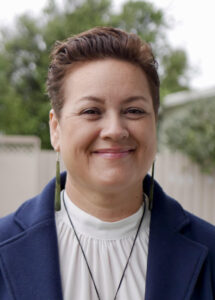 |
Nayda Heays, RN, Te Whatu Ora Te Matau a Maui Hawkes BayNayda Heays joined the NZNO-Te Whatu Ora collective agreement bargaining team as the Te Poari representative, last year.
|
There’s more to bargaining than a signed settlement
As Topūtanga Tapuhi Kaitiaki o Aotearoa NZNO members rise up (maranga mai) to fix a broken health system, bargaining is in transition.
“We have to see bargaining not as an end in itself, but as a means to an end. It’s quite a subtle shift, but it’s really important,” NZNO chief executive Paul Goulter said.
NZNO currently has 116 active collective agreements – each one representing a group of members, large or small, providing desperately needed health services.
But the organisation has a more ambitious goal than those for specific collective agreements – the five “fixes” of Maranga Mai!
- Te Tiriti actualised within and across the health system.
- More nurses across the health sector.
- Pay and conditions that meet nurses’ value and expectations.
- More people training to be nurses.
- More Māori and Pasifika nurses.
The Maranga Mai! vision of Aotearoa’s health system will mean negotiated pay and conditions are regularly enforced, and on time, and opportunities for Fair Pay Agreements (FPAs) are identified.
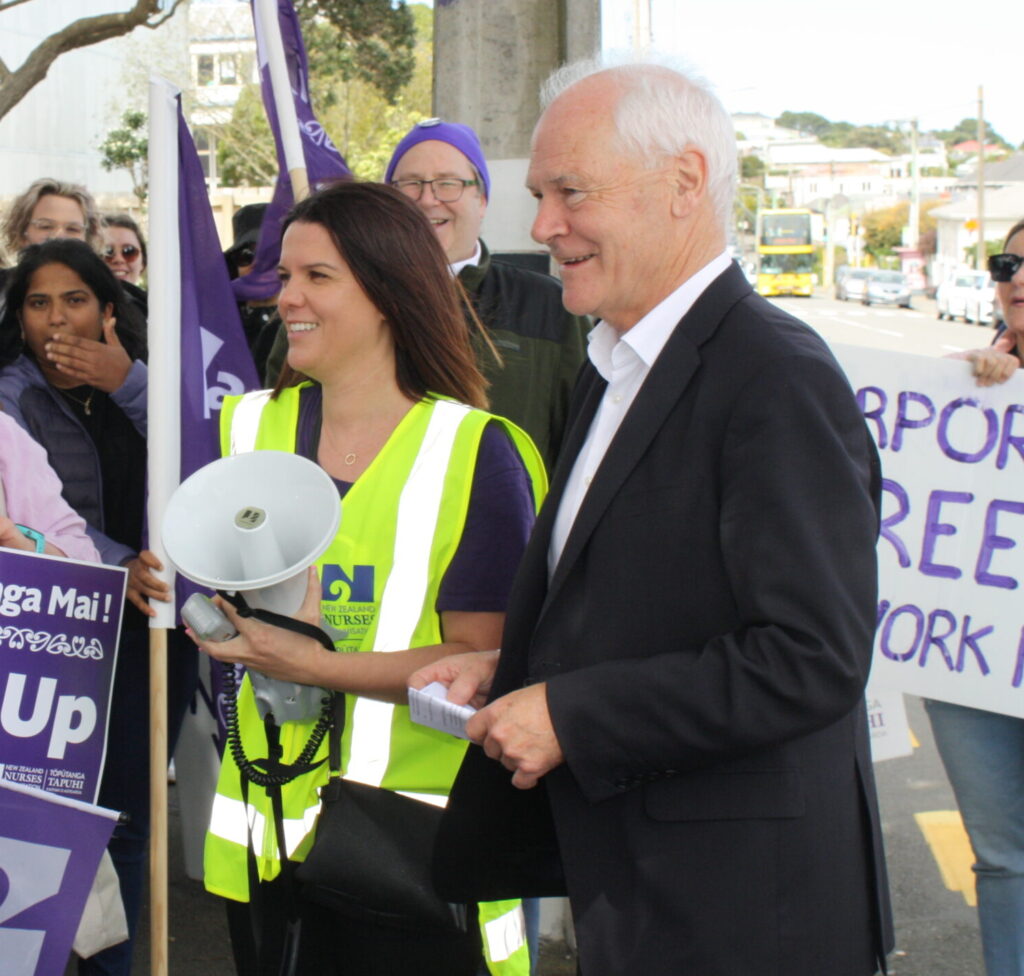
The top priority for all bargaining is achieving common terms and conditions for all members, regardless of sector or employer, Goulter says.
“It’s driven by the age-old truth that ‘a nurse is a nurse is a nurse’.”
“It’s a profession with skills and knowledge, that while applied quite differently across the sectors, maybe with different emphases, carries the same responsibility – just expressed differently.”
Sector-wide bargaining strategies will be developed to ensure the most effective approaches are taken and the best outcomes achieved, Goulter said.
‘If you haven’t got a system to ensure the principles [of Te Tiriti are achieved] within the bargaining process it’s kind of like swimming against the current.’
Kaiwhakahaere Kerri Nuku said the Maranga Mai! aspirations to actualise Te Tiriti and work towards increasing Māori and Pacific nurses could be applied to bargaining.
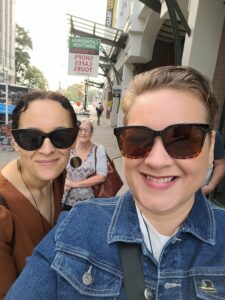
“A very basic thing we need to do is to ensure that anybody representing members has a very real understanding of what Te Tiriti is – and not just an assumption that because we’re all nurses, we already know. Because in actual fact we don’t.”
The te ao Māori concept of whanaungatanga, or relationships, needed to be better applied in the consultation stage of bargaining, Nuku said.
“So, how we engage with Māori, how we actually include and proactively seek to engage them in the process, and then, how we actively protect their interests.”
Tired and deflated, but determined
Ashleigh Beck, a mother of two young children and experienced RN at a busy and desperately short-staffed rural hospital in Central Otago, attended her first bargaining meeting in January.
Employed by a community trust – Central Otago Health Services Limited – Beck receives a base salary of $80,907, significantly less than hospital colleagues on step 7 employed by Te Whatu Ora, who received $95,340 from March 7 following an interim pay equity adjustment.
Penal rates, shift allowances, maternity leave and other conditions are also far less generous.
Dunstan Hospital has been losing staff rapidly, and as of early February, had seven vacancies.
There was a friendly and collegial vibe as they gathered together in mid-January in a hospital meeting room. Clyde is a small town, and they all know each other, Beck said.

But the atmosphere took a hit when the trust financial manager made it clear paying parity rates with Te Whatu Ora nursing staff would run the hospital into deficit.
As she drove home mid-afternoon, Beck felt tired and “definitely deflated”, but still determined.
“We absolutely work our arses off there, and to think that if you were at any other hospital, you’d be paid more . . . people are really passionate about it, it just seems like such inequality really.”
The January meeting was to be the only time the delegates and employers met for bargaining.
In the weeks that followed, the NZNO team became frustrated as the employer kept putting off a follow-up meeting.
They took the issue to their local media and a story: “Dunstan Hospital nurses stressed and stretched as pay rises miss them” was published on February 13.
The following week, managers hinted there had been an uplift in funding and pay parity rates were likely.
“It seemed to move the week after that, so I don’t know if that was a coincidence,” Beck said.
On March 10, an email to Dunstan Hospital staff confirmed their employer had “successfully negotiated” a funding lift for pay parity.

“Effective from 1st February 2023, COHSL will be increasing the pay scales of nurses and HCAs to match the National DHB Multi Employer Collective agreement pay rates which includes the pay equity element.”
But by March 21, members and delegates still did not have a settlement, and had received no communication from their employer about the next steps of bargaining to discuss other claims, Beck said.
They learned, after their pay day this week, the new rates would not be paid until the end of April, backdated to February 1.
While relieved over the base rates increase, Beck said the whole process left a bad taste in her mouth.
“It’s incredibly frustrating, especially where we are at now. I feel like their main focus was on getting the pay increase, but they don’t care about the rest of it. There’s still a lot of work our contract needs to even come close to what the Te Whatu Ora MECA has.”
Steering the waka – Te Whatu Ora members
As the largest collective, about 30,000 members employed by Te Whatu Ora, have used their clout to achieve the best pay and conditions among NZNO membership.
They have put forward the largest-ever pay equity claim and this month have achieved a major win, with interim rates increases and backpay applied from March 7.
For non-Te Whatu Ora delegates and members, the Te Whatu Ora collective continues to be the benchmark for their own bargaining – with mixed results.
NZNO industrial advisor Danielle Davies says a renewed focus on parity through the Maranga Mai! campaign will make a difference.
‘We absolutely work our arses off there, and to think that if you were at any other hospital, you’d be paid more . . . people are really passionate about it, it just seems like such inequality really.’
“The aim of parity with DHBs [Te Whatu Ora] isn’t new, but the Maranga Mai! campaign is about intensifying efforts to achieve it.”
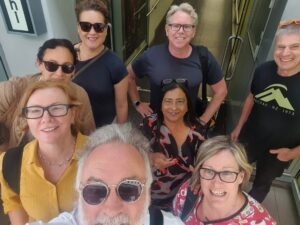
The inflation rate – measured by the Consumer Price Index (CPI) – remained a critical measure for pay claims, she said.
Goulter said Te Whatu Ora members, represented by their delegates and bargaining team, were leading the way for all nurses.
“They basically are leading the establishment of appropriate terms and conditions and that’s a really important role for them, which is to steer the waka.”
‘We’d love to pay parity, but we don’t get enough funding’
In parity disputes, employers are pinning the blame on deficient government funding for the public services they provide.
It’s the most common “brick wall” in bargaining for parity claims, making members feel like they are stuck in the middle of a never-ending spat between their employer and the Government.
Delegates are making their case as persuasively as possible at the bargaining table, while also leveraging off a wider push for change through direct and indirect action.
Plunket and GP nurses launched a campaign to take the issue to their local MPs following a strike in October last year.
An NZNO national day of action on April 15 will see members on the streets, raising their voices to demand that the nursing staff crisis is front and centre for every politician, candidate and voter in this year’s election.
Smashing the parity brick wall
Auckland practice nurse Marianne Harris and her Tamaki Health bargaining team came up against an uncompromising brick wall at their first meeting in June last year. Initially.
Four months and four meetings later, ending in September, the company which owns 45 GP clinics across the city, had gone from “nah” to “yeah” on pay parity for base rates.
Harris said the base rates pay increase was a great win, but came at a cost with most other claims dropped.
“They weren’t accepting of what we were wanting . . . to get that pay increase, it was hard work.”
Tamaki Health claimed the annual increase in the Government’s capitation funding of about 3 per cent meant they couldn’t afford to pay their nurses more.
“But it was quite apparent [from comments in the meeting] that they had other sources of revenue, funding from ACC, vaccinations work,” NZNO Auckland organiser Phillip Marshall said.

“Our main argument was, you’re having trouble recruiting and retaining nursing staff, the only way to remedy this is to pay what the DHB pays . . . ”
Ultimately, Tamaki Health “rummaged through some couch cushions” and came up with the money, in an attempt to improve recruitment and retention in an increasingly unviable situation, Marshall said.
Bargaining for a new Tamaki Health collective agreement took place at the height of the Te Whatu Ora pay equity dispute last year and concluded with a settlement in September.
The timing meant Harris and her bargaining team couldn’t use new rates announced by Te Whatu Ora in December, resulting from an interim pay equity adjustment.
A te ao Māori approach to bargaining?
Long-time Māori organiser Manny Down brings a te ao Māori perspective to the bargaining process.
Based in Palmerston North, Down is involved in about eight collective agreements for members in primary care, hospices, aged care and private hospitals.
“My goal in life is to always uphold mana for the people I am working with, whether they are members or employers. So, ‘kaua e takahia te mana o te tāngata’ – we don’t go in there to trample on anybody’s mana, or anybody’s dignity, we want to lift it.”
Down explains the approach is like weaving a whākiri (mat).
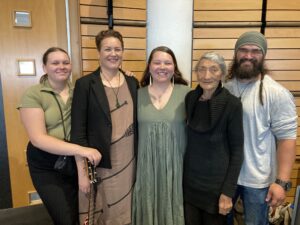
“We’ve come with our claims – that’s the mat we’re about to weave – and then we do it through the process, whiti kōrero, so we start weaving our conversation, weaving our discussions, so each strand that we weave, makes the final product, the whāriki.”
Tikanga was applied and shared between the two negotiating teams for the Te Whatu Ora collective agreement meetings, but this did not make it a te ao Māori process, Te Poari representative on the NZNO negotiation team Nayda Heays said.
“If you haven’t got a system to ensure the principles [of Te Tiriti are achieved] within the bargaining process, it’s kind of like swimming against the current.”
Nuku said the current bargaining process did not allow for tino rangatiratanga (self-determination), and was at odds with te ao Māori in many ways.
“Until we can actually push for legislative change that allows Tino Rangatiratanga through the legal processes, we’re never going to be able to do that.”
The process to determine representation of members on bargaining teams, and the prioritisation of issues and claims, were not “from a cultural worldview, but one where there is a majority voice”, Nuku said.
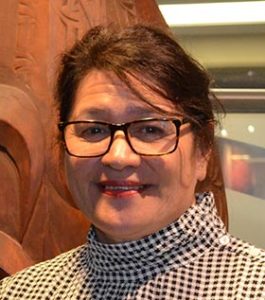
“So the principles of rangatiratanga [self-determination], of manaaki [support, hospitality], of whanaungatanga [relationship], those things don’t apply in this bargaining situation. Those bargaining processes they are very prescribed following a legal framework that is l-a-w, as opposed to a framework under l-o-r-e.”
Despite this, Nuku said there were actions members and delegates could take to better honour Te Tiriti in bargaining.
These included: ensuring bargaining representatives have a good understanding of Te Tiriti; using the principle of tino rangatiratanga to assess how claims serve, or under-serve tangata whenua populations and proactively seeking to engage Māori members in the process.
Putting Maranga Mai! ‘fixes’ front and centre in aged care
NZNO has taken a strategic “pattern bargaining” approach to gain common terms and outcomes across several aged residential care (ARC) collective agreements, in alliance with E Tū union.
A term that has its origins in the powerful US car manufacturing unions, “pattern bargaining” aims for common terms and conditions across an industry, or sector, achieving incremental gains from each negotiation to influence the next one.
‘My goal in life is to always uphold mana for the people I am working with, whether they are members or employers. So, ‘kaua e takahia te mana o te tāngata’ – we don’t go in there to trample on anybody’s mana, or anybody’s dignity, we want to lift it.’
NZNO and E Tū bargaining teams from four large ARC companies – Oceania, Bupa, Summerset and Radius – have taken the five “fixes” of Maranga Mai! to the table at consecutive negotiations since September, acting aged care industrial advisor Glenda Alexander said.
“We know the companies in aged care are incredibly competitive and there’s usually facilities in each chain in a city, so people will decide to put their person into one of them.
“Additionally, because nursing recruitment is so incredibly tight, they’re literally competing for staff and are trying to make it as attractive as possible. So we leverage off that a bit . . .”
Settlements have been signed for Oceania, Bupa and Summerset to date, and a first meeting with Radius is planned for late March, early April, Alexander said.
‘They weren’t accepting of what we were wanting . . . to get that pay increase, it was hard work.’
Many ARC operators have claimed government funding has been insufficient to allow parity pay and conditions with Te Whatu Ora.
Alexander said employers were still waiting to find out how much they would receive, following a November funding commitment of $200 million from former Minister of Health Andrew Little, to support increased pay for primary health sector staff.
Little said the first tranche of funding would go to aged care, hospice, and Māori and Iwi providers.
While some ARC employers have offered base rates that were close to – or even matched – those of Te Whatu Ora, parity has not been extended to other aspects of the agreements, including shift allowances, holiday pay, sick leave and parental leave, Alexander said.




